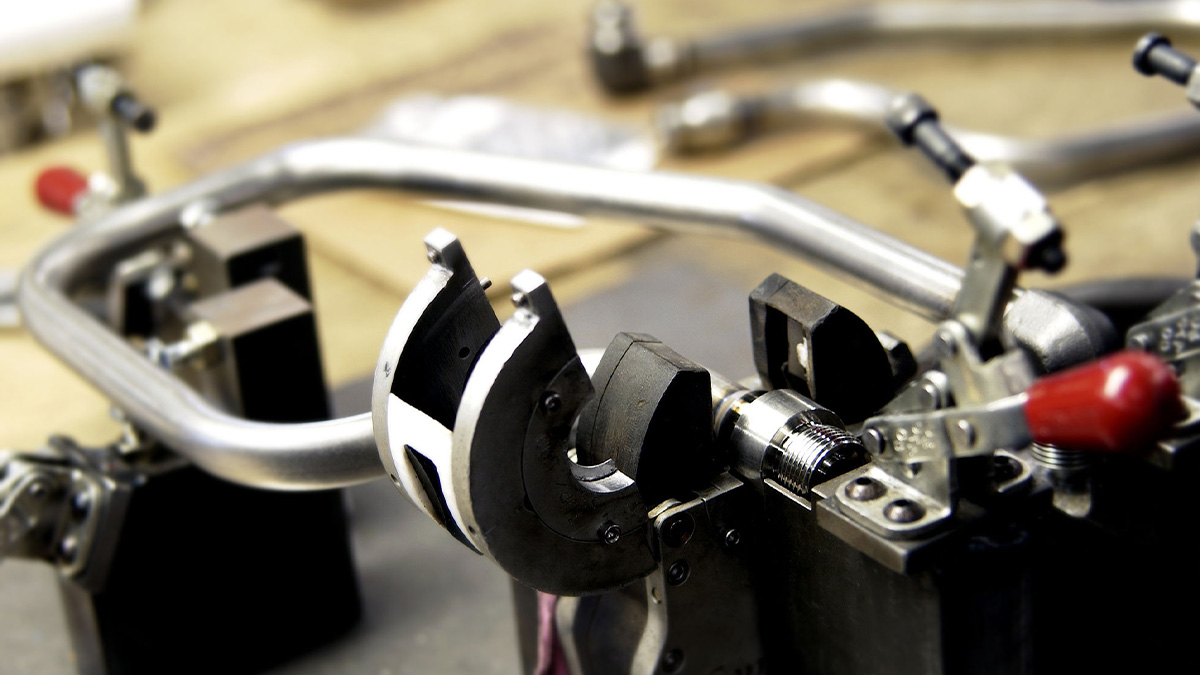In the machining process, as the tool cuts off the unnecessary material from the workpiece, a cutting force will be generated on the workpiece. To resist the cutting force and allow the cutting process to be completed, the workpiece must be firmly clamped on the machine tool. The device that positions and clamps the workpiece is called a fixture. The device that holds and guides the cutting tool is called a jig.
What is a Jig?
Unlike the fixture which holds the workpiece in a fixed position, the jig is a tool that assists in controlling the position or action of a cutting tool as it machines a workpiece that has been positioned in a predefined location. Jigs are used for controlling tools for woodworking, metalworking, manufacturing, handicrafts, and other applications. They allow for smooth manufacturing operations, shorten the processing times, and increase productivity.
What is a Fixture?
In the machining process, any device used to hold a workpiece in place while it is being machined can be called a fixture.
When machining a workpiece, each workpiece must be positioned on the machine before machining. During machining, the workpiece may undergo several processes as it is machined to the desired size and shape, and need to be held in various different positions. When producing multiple workpieces, the fixture will ensure that every workpiece is positioned in the same location each time, to ensure that every work piece machined is consistent.
A fixture is usually composed of clamping devices, tool setting guides, and indexing devices. They may use blocks, positioning pins, and bevels to guide the workpiece into the working space. They are used for a broad range of machining processes including for turning, milling, broaching, grinding, boring, tapping, etc. Fixtures do not guide the tool on a workpiece like a jig does.
What is a Clamp?
An important component of the fixture is the clamp. The clamp is the primary device used for gripping a workpiece. To perform properly, both the clamping devices and their location on the fixture must be carefully selected. The clamp must be solid and provide enough clamping force to firmly hold the workpiece during processing, to prevent the workpiece from arbitrarily shifting.
What Types of Fixtures are there?
The types of fixtures may vary depending on the processing characteristics of the workpiece. Multiple workpieces may be simultaneously clamped within the machining range of the machine tool. Some fixtures can set the workpiece in multiple positions over the production process.
Four classes of fixtures are:
- Universal fixtures: These include machine vises, chucks, suction cups, indexing heads, rotary tables, etc.
- Specialized fixtures: These are specially designed and manufactured for the clamping needs of a certain product part or for a certain process. The workpiece is specific and highly targeted and is generally designed by the product manufacturer.
- Adjustable fixture: A special fixture that can replace or adjust components.
- Combination fixture: A fixture composed of standardized components of different shapes, specifications, and uses, suitable for single-piece, small-batch production, and temporary tasks for trial production of new products and frequent product replacement.







.png)






